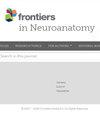多明戈-桑切斯(Domingo Sánchez y Sánchez,1860-1947 年):卡哈尔研究无脊椎动物神经系统的人
IF 2.1
4区 医学
Q1 ANATOMY & MORPHOLOGY
引用次数: 0
摘要
多明戈-桑切斯-桑切斯(Domingo Sánchez y Sánchez,1860-1947 年)是圣地亚哥-拉蒙-卡哈尔(Santiago Ramón y Cajal)的杰出弟子,在研究无脊椎动物神经系统的组织学和生理学时,他一丝不苟地使用各种染色和显微镜技术,在西班牙神经组织学派中发挥了重要作用,做出了宝贵贡献,得到了科学界的认可和引用。他的研究领域非常广泛:最初是人类学家和动物学家,后来获得医学博士学位,专门从事无脊椎动物的神经组织学研究,包括对昆虫视网膜和神经中枢的详细研究,以及发现昆虫幼虫在变态过程中神经中枢的组织溶解现象,对当时的科学范式提出了挑战。此外,桑切斯对昆虫神经纤维的研究对支持卡哈尔的神经元理论和驳斥贝特和阿帕提的网状结构假说至关重要。此外,他还对骨骼肌的高尔基体、溶酶体系统、内质网和肌浆网(卡哈尔-福萨里网络)进行了初步观察。多明戈-桑切斯(Domingo Sánchez y Sánchez)卓越的科学研究和对 20 世纪西班牙神经史学的贡献仍是一笔重要遗产。生命科学标识符Apis mellifera: urn:lsid:zoobank.org:act:9082C709-6347-468-A0DC-27DC44400CB2Helix aspersa: urn:lsid:zoobank.org:act:9099927E-24DF-4F89-B352-6B7902CD4A38本文章由计算机程序翻译,如有差异,请以英文原文为准。
Domingo Sánchez y Sánchez (1860–1947): Cajal’s man on the nervous system of invertebrates
Domingo Sánchez y Sánchez (1860–1947), a distinguished disciple of Santiago Ramón y Cajal, played a fundamental role in the Spanish School of Neurohistology through the meticulous use of diverse staining and microscopic techniques in the study of the histology and physiology of the invertebrate nervous system, generating valuable contributions that were recognized and cited by the scientific community. His research covered a wide range of areas: he was initially an anthropologist and zoologist, later earning a doctorate in Medicine and specializing in the neurohistology of invertebrates, including the detailed study of the retina and nerve centers of insects, and the discovery of histolysis in nerve centers of insect larvae during metamorphosis, challenging scientific paradigms of the time. Furthermore, Sánchez’s work on the neurofibrils of insects was crucial in supporting Cajal’s neuronal theory and refuting Bethe and Apathy’s reticularist hypothesis. Additionally, he also made preliminary observations of the Golgi apparatus, the lysosomal system, the endoplasmic reticulum, and the sarcoplasmic reticulum of skeletal muscles (Cajal-Fusari network). Domingo Sánchez y Sánchez’s exceptional scientific research and contributions to neurohistology in 20th century Spain continue to serve as a significant legacy.Life science identifiersApis mellifera : urn:lsid:zoobank.org:act:9082C709-6347-4768-A0DC-27DC44400CB2Helix aspersa : urn:lsid:zoobank.org:act:9099927E-24DF-4F89-B352-6B7902CD4A38
求助全文
通过发布文献求助,成功后即可免费获取论文全文。
去求助
来源期刊

Frontiers in Neuroanatomy
ANATOMY & MORPHOLOGY-NEUROSCIENCES
CiteScore
4.70
自引率
3.40%
发文量
122
审稿时长
>12 weeks
期刊介绍:
Frontiers in Neuroanatomy publishes rigorously peer-reviewed research revealing important aspects of the anatomical organization of all nervous systems across all species. Specialty Chief Editor Javier DeFelipe at the Cajal Institute (CSIC) is supported by an outstanding Editorial Board of international experts. This multidisciplinary open-access journal is at the forefront of disseminating and communicating scientific knowledge and impactful discoveries to researchers, academics, clinicians and the public worldwide.
 求助内容:
求助内容: 应助结果提醒方式:
应助结果提醒方式:


